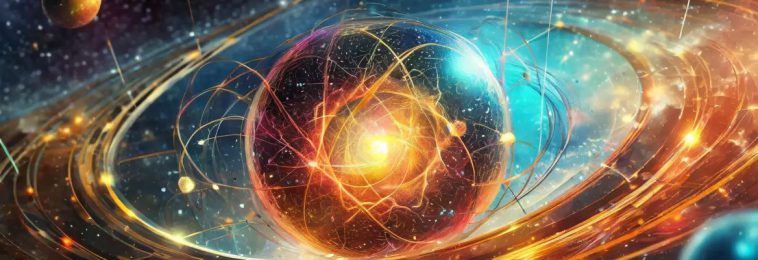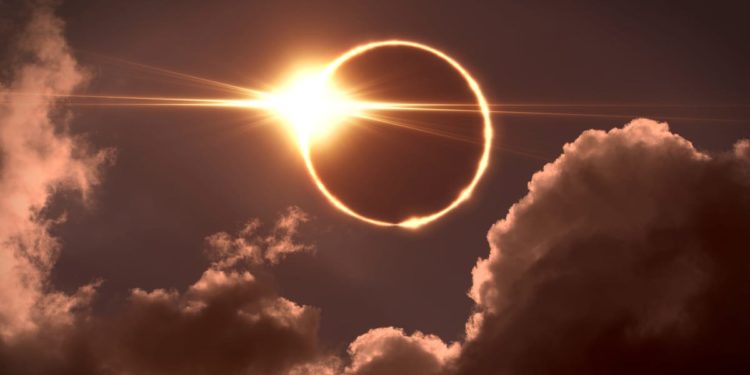How Bell’s Paradox is solved by Retrocausality
IAI NEWS – by Emily Adlam
Two particles affecting one another faster than light seemed unimaginable but there is no denying the facts. This mystery has inspired much skepticism from lay folk and Nobel prize winners alike. But how do we solve this? Emily Adlam argues, that retrocausality, the idea the future can affect the past, is the key to solving this quantum enigma.
One of the most famous and puzzling features of quantum mechanics is the fact that it exhibits what Einstein called ‘spooky action at a distance, – correlations between measurements performed on particles very far apart in space. Now, of course distant correlations in and of themselves are nothing surprising. For example, suppose I take a pair of socks out of my drawer, separate them, and then send one off to my friend Alice in London and the other to my friend Bob in Auckland. If my friends observe the socks and then compare their results and discover that they both have socks of the same colour, there’s no mystery about that – the socks are the same colour because of a common cause in their shared past, i.e. the fact that they both came from the same pair. But the correlations appearing in quantum mechanics are special because they cannot be explained in this way. For example, distant quantum correlations are typically demonstrated in a ‘Bell experiment,’ in which I prepare a pair of quantum particles and send one to Alice and another to Bob, and then Alice and Bob both choose a measurement and perform that measurement on their particle. A famous theorem due to the physicist John Bell tells us that in this scenario, correlations explained by a common cause in the past must obey a certain inequality – but it turns out that we can choose preparations and measurements in quantum mechanics which lead to a violation of Bell’s inequality. This seems to indicate that Alice’s decision to make one measurement rather than another has an instantaneous influence on Bob’s particle and thereby affects the results that Bob obtains in his own measurement, regardless of how far apart they are.
These instantaneous nonlocal influences are troubling to many physicists, not least because they seem strongly in tension with our understanding of spe- cial relativity. The problem is that special relativity tells us that there is no fact of the matter about what is ‘instantaneous’ – to determine whether two distant events are simultaneous we must choose a reference frame relative to which we can assess simultaneity, but special relativity ultimately says that no reference frame is preferred and therefore there are no observer-independent facts about simultaneity. Now, quantum nonlocality doesn’t produce any observable contra- dictions with this relativistic principle, since the instantaneous influences work in a subtle way which means they are only detectable after the results of the measurements on both particles have been compared, and therefore we can’t ex- perimentally detect any preferred reference frame. But still, if the influences are instantaneous there must be some preferred reference frame, even if observers like us can’t detect it, and it’s troubling to think that the deep structure of quantum mechanics violates such a foundational principle of relativity. This seems particularly problematic if we hope to one day unify quantum mechanics and relativity in a theory of quantum gravity, for it seems unlikely we will be able to do this if the two theories are incompatible in such a foundational way.
Consequently, a number of physicists have sought to understand if there is any way we can explain these distant correlations without ‘spooky action at a distance.’ In order to do this, we will necessarily have to deny one of the assump- tions going into Bell’s theorem, and most work on the topic has focused on an assumption known as statistical independence, which simply says that the state of the two particles together at the time that I prepared them is independent of the later choices that Alice and Bob make about which measurements they are going to perform. This assumption is clearly necessary to prove the existence of non-locality, because if we know in advance what measurements Alice and Bob are going to perform, we can just pre-program the particles with outcomes which will give the appearance of non-locality even though everything is com- pletely local. So if there is any plausible way to deny statistical independence in a Bell experiment, that would allow us to resist the existence of spooky action at a distance.
However, we can’t simply stipulate that statistical independence is violated – that would amount to simply switching one spooky nonlocal influence for an- other. Rather we will have to come up with some local mechanism by which the state of the particle could come to be correlated with the later measure- ment choices. And there are two obvious ways to do that. The first, known as superdeterminism, involves suggesting that there is some common cause in the past of the measurement choices and the preparation events which results in correlations between them. The second, known as retrocausality, involves sug- gesting that the measurement choices have a backwards-in-time causal influence on the state of the particle at the time of its preparation.
Superdeterminism might at first sound like the more natural approach, but it actually has some very strange consequences. For Alice and Bob can make their measurement choices in any way you can possibly imagine – flipping a coin, as a function of the date of their birthdays, by observing the light from distant galaxies, and so on. So superdeterminism regards us to suggest that there is some common causal factor which always influences the measurement choices, regardless of whatever weird and wonderful method Alice and Bob might use to make their choice. Moreover, we will probably have to just stipulate that the desired correlations are simply written into the initial state at the beginning of time, and that seems problematic, since our current understanding of statistical mechanics and thermodynamics suggests that we can only make sense of the arrow of time if we assume that the initial state of the universe does not contain too many fine correlations. Therefore adopting superdeterminism seems to create serious tensions with well-established scientific methodology.
On the other hand, retrocausality does not require any special adjustments to the initial state of the universe…



